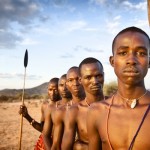In this clip screened in the lecture from the Coen brothers’ ‘Blood Simple’ describe what is happening in terms of the edits specifically in terms of the audio and video. Also name the different kinds of audio you can hear.
-The opening shot consists of a close-up of the fish being dropped onto the table, the sound of the fish hitting the table is very evident. The shot then cuts to the first character light his cigarette, we can hear the sound of him flicking his lighter to light his cigarette, close the lid and drop that onto the table also. As he drops the table onto the table the clip cuts to a close up of the lighter being dropped onto the table. In the background crickets chirping can be heard in a low volume. As the second character sits on his table we hear the chair creak as his body sinks into the chair, the camera focused on him. They begin dialogue with one another, the camera in medium long shot so we can see both characters in the frame. Whilst they talk background street noises can be heard. The first character hands over an envelope to the second character and we hear the sound of the paper envelope being passed and opened. We hear the chair squeak again as the second character reaches out to grab the envelope. All the while the crickets continue chirping in the background. We see the envelope and the photos within the envelope close-up, showing us a photo of a man that has been shot. All movements can be heard between the characters as they move around in their chairs. The volume of their voices is the same and slightly low also. The first character reaches into his pocket when he says ‘no I trust you’, and as his hand sits in his pocket a clicking/rotating noise can be heard. The first character then pulls a gun out of his pocket and a very loud gun shot is fired into the second character and as his body is hit by the bullet, his chair creaks slightly. His foot that was resting falls off the table after a period of silence as the first character stares at the man he just shot and hits the floor loudly breaking the silence. He places the gun he continued to point at the man on the floor under the table and it silently is placed onto the wood, then kicks it harshly across the floor, we hear it slide a fair distance away from the man. We then hear the chair creak as he stands up. He picks up the cash on the table and we hear him stuff it into the pocket of his jacket. We hear him push his hat onto his head and walk away from the now dead mans body.









